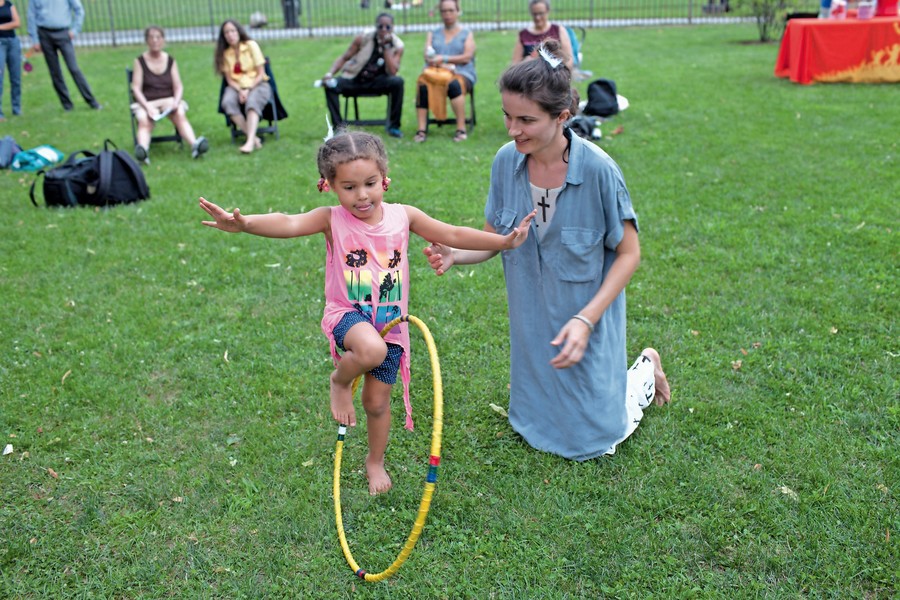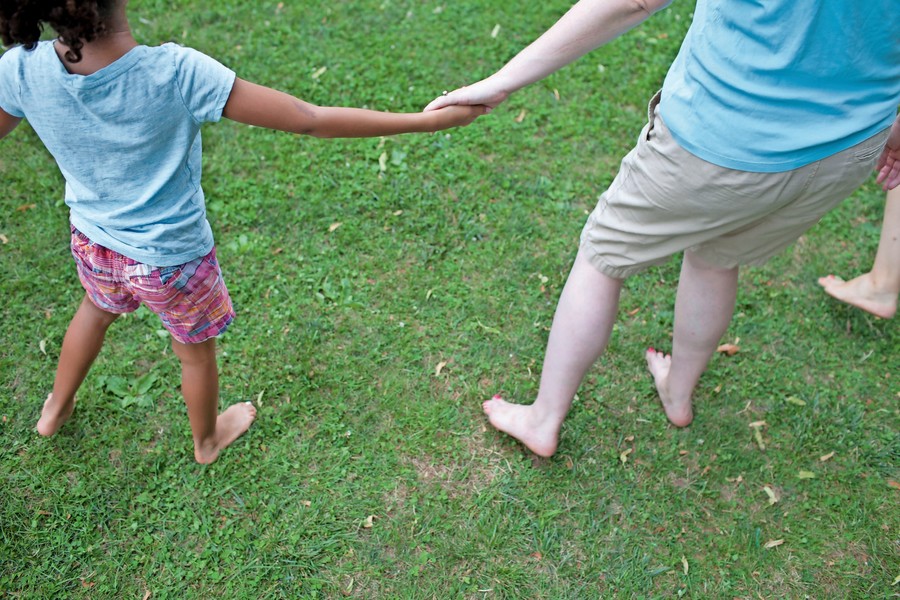No shoes? No problem for barefoot dancing at Vannie
All they wanted to do was dance, but they forgot their dancing shoes.
But that’s OK, because dozens gathered at the Van Cortlandt House Museum last week, dancing barefoot in the moist grass.
“What’s wonderful is that many people enjoy barefoot dancing,” said Margot Perron, Van Cortlandt Park Conservancy’s president. “It’s being connected to the Earth and the joy of being together.”
This particular barefoot dancing group first started at Wave Hill some 25 years ago, Perron said.
The idea became very popular there, so much so that when Perron relocated to Van Cortlandt Park more than a decade ago, she replicated her barefoot dancing event every Thursday night in the summer.
”You don’t get the excitement of dancing with shoes on, it feels more like hiking,” Perron said, with a chuckle. ”Dancing on one’s feet is such a tremendous feeling.”
Aside from no shoes, another big draw is that a new form of dance is represented every week in a attempt to display different cultures.
“The goal for the Van Cortlandt Park is to bring multicultural dances, and expose that to the community,” said Makalina Gallagher, arts and education coordinator at Lotus Music and Dance. Her organization, which co-sponsors the event, introduced styles that have Middle Eastern, Korean, West African and other influences.
And it’s no coincidence these different cultures tend to dance barefoot.
Native American dancing was the theme July 20, led by Louis Mofsie. Pop culture depicts such dances as being rather serious, Mofsie said that wasn’t always the case.
“A lot of the Native American dances are meant to have fun,” he said. “A stereotype created by movies and television is that every time you see a Native American dancing, they are doing some sort of spiritual dance like a rain dance. And that is not true. Most Native American dances are social dances.”
The first dance Mofsie demonstrated was a “robin dance,” meant to celebrate the arrival of spring.
As people gathered into a circle, they were instructed to step once to the left.
The dancers are stagnant at first as they try to learn moves. By the time they get to the last dance, however — the “smoke dance” — the mood of the event starts to change.
”To me, this is the best part of the evening where everybody has learned the steps and they feel comfortable with it,” Perron said. “At first they were tentative, but now you can see their progression.”
Ana Gantzer’s love of dancing prompted her to join the barefoot dancing group for the first time because she saw it as a good way to let loose.
“I loved it,” she said. “Dancing helps me overcome those limitations that we have, so I will definitely be coming back again.”
Vicky Madway comes frequently, and her love for barefoot dancing is hard to match since she makes the nearly four-hour trip from Boston.
“I like the challenge, doing things that don’t feel so great,” Madway said. “My daughter is part Native American, so this is something that I really wanted to do.”
While next week’s dance may be different, the objective, Perron said, is still the same. Just take it from a popular “Peanuts” comic strip character.
“As Snoopy said, ‘To dance is to live, and to live is to dance.’”









